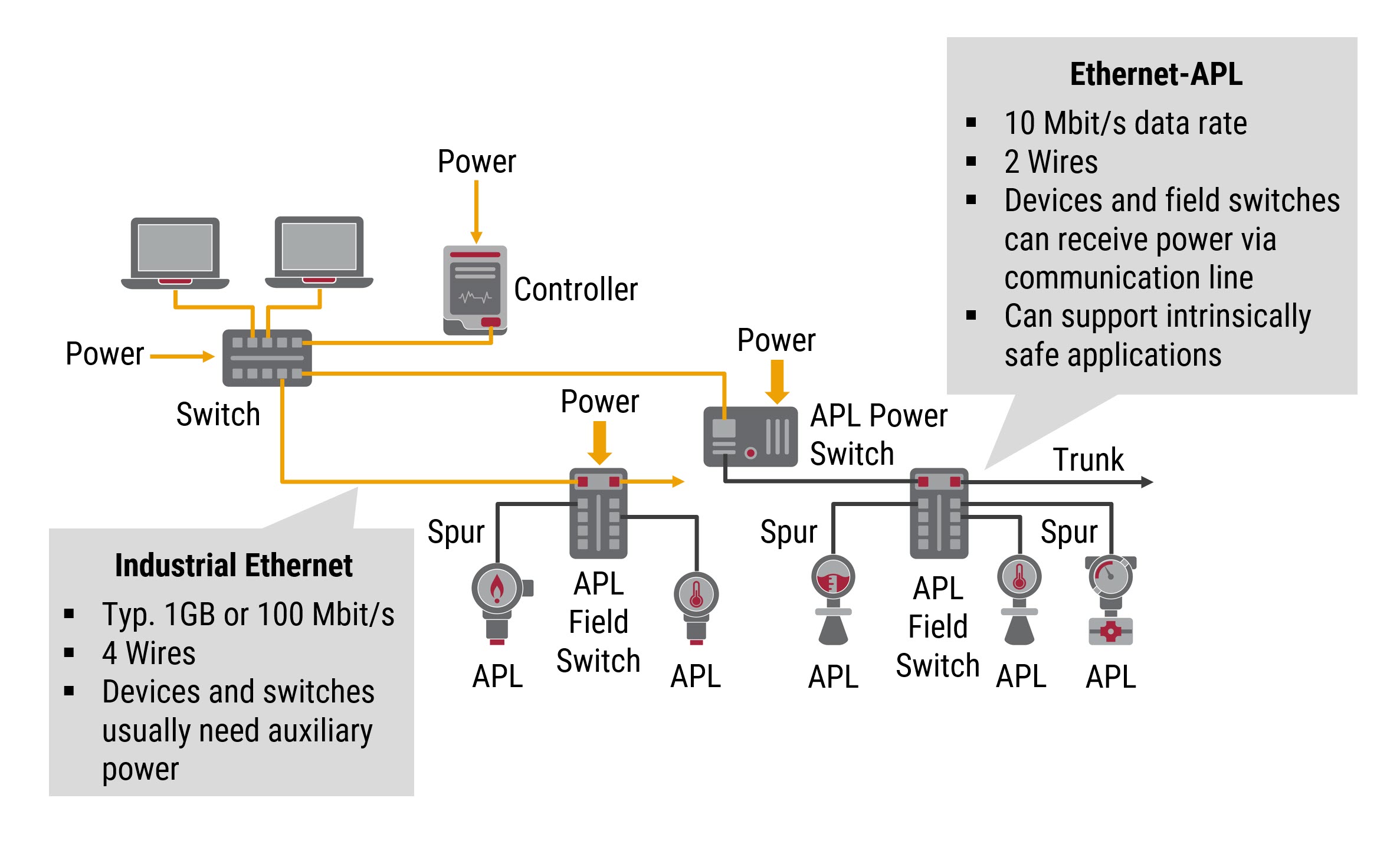Simplify Ethernet-APL Transitions with HART-IP

As process industries move from 4-20mA signaling to Ethernet-APL, they will find their experience with traditional HART directly translates into HART-IP, speeding implementations.
For many years, process industries have relied on HART over 4-20mA analog current loops as the leading bi-directional digital communications method between intelligent field devices and host systems because it is simple, reliable, and easy to use. As industry moves toward 2-wire Ethernet-APL (10BASE-T1L), implementers want to know the best path forward for preserving compatibility with extensive existing installations. HART-IP, introduced in 2007 to support a wide variety of industrial Ethernet based devices, meets this need by effectively preserving end user technology investments, while providing significant new functionality.
Our Control Engineering September 2022 article titled HART-IP Simplifies Ethernet-APL Transition describes why HART-IP over Ethernet-APL provides many advantages for end users.

Advancing from 4-20mA to Ethernet-APL
Many legacy instrumentation and control devices use a 4-20mA signal to transmit a single primary process variable, and to provide device power. For digital communications, the HART communication protocol is superimposed on top of the 4-20mA transport media. HART provides valuable and reliable data access to many process variables, along with status, calibration, and diagnostic information.
Wired Ethernet has been available for decades and continues expanding from the enterprise to plant networks and control/field networks. However, typical commercial-grade media is not always suitable for industrial installations, which must cover long distances, supply instrument power, and resist environmental noise conditions.
Ethernet-APL uses a familiar two-wire installation, but extending up to 1,000 meters between network switches, and 200 meters to each field device. It provides power over the media, is suitable for use in hazardous areas, and offers robust noise immunity. Ethernet-APL can be used in conjunction with any Ethernet-based protocol, such as HART-IP, and follows the NAMUR recommendations for use in process automation industry network architectures. While slower than commercial Ethernet, Ethernet-APL operates at 10Mbit/s full-duplex with cycle times as fast as 10ms, which is by far fast enough for communications and real-time control in process industry applications.
For these reasons and more, Ethernet-APL is poised to become the new open standard for process automation and instrumentation.

HART-IP Over Ethernet-APL
Because of the popularity of Ethernet and the emergence of Ethernet-APL, FieldComm Group has extended HART-IP with cybersecurity and other features, making it ideal for deployment in the field instrument layer of a plant network for applications, including real-time control. HART-IP is easy to use, operates independent of underlying media, and works with redundant media, including mesh and ring topologies, and at any network speed. HART-IP allows multiple properly-credentialed hosts to securely access instruments, independently and concurrently.
FieldComm Group is ready with a test system and other tools to support and enable registration of HART-IP products on Ethernet-APL as they become available. Because HART-IP supports the commonly understood HART data model, it is familiar to many process industry personnel, and it remains backward compatible while extending the architecture further to provide Ethernet support and real-time control.
HART has a long heritage within the process industry and holds much untapped potential. HART-IP enables an even greater expansion of data availability and access. While companies can develop many new tools to take advantage of the higher bandwidth, these users do not need to wait because the existing HART tools can be used with HART-IP products.

Industrial process automation end users currently have significant investments in existing HART and WirelessHART tools, technology, and training. Therefore, the best way for these users to adopt newer and higher-performance technologies is to transition to HART-IP over Ethernet-APL.
FieldComm Group is an expert in these systems, and we would be glad to discuss how we can support your needs.